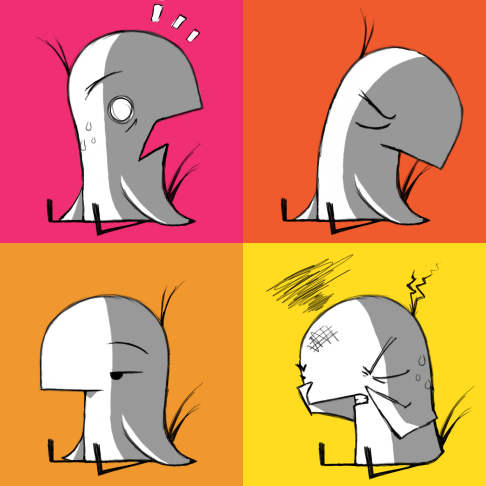The response to the October Challenge has been incredible! I think the one thing that’s most amazing about it: everybody gets it. Every appearance of it on the internet has encouraged a plethora of “I’m in!” or “It’s ON like Donkey Kong!” responses. I’ve had dozens of direct tweets and people hunt me down in IRC just to tell me how much they love the idea. Very awesome!
For October 1st, I’ll be setting up and doing a new post on the Ludum Dare site, explaining how we can keep a list of finished games (i.e. using the existing Ludum Dare competition system). I’m putting it off a few days so I can actually get started.
So lets get started.
I already have the business stuff done (been doing it for a few years now). I also already have dev program memberships and payment info registered with most platforms (iOS, AppUp, …). If you haven’t done this yet, you should. Paperwork takes time to ship, be received, and approved.
So me, I’m jumping right in to development.
I shouldn’t say my time is short, since I am a full-time independent developer (sorry students and dayjob folk). Still, I’m treating the next month as a fraction of that. Despite, I’m still expecting to take the entire month to finish. My “first sale” will likely not be until early November, as store approvals do take time.
I have a rough plan scribbled down in my notepad and sketchbook (and in my head). I’m going to create a game by combining several things I know extremely well, something I could (if crunching like a maniac) probably get playable during a traditional LD competition time-line.
Looking back, one of the things about the iPhone App Store I completely didn’t expect was something I want to call “Incremental Game Development“. Coming from a console games background, our games need to be finished and seriously tested before they ever hit the market. So I as a console developer did exactly that. Took 4 month, and finished a game. Around the same time, a game called Fieldrunners was released. This game is the gold standard of the Tower Defense genre available for many major mobiles (iPhone, PSP, DS). It was almost expected that between the three of us (Smiles, Edge, Fieldrunners), Fieldrunners was going to win the IGF Mobile, which they did. There is one thing few people remember though: Fieldrunners launched *WITHOUT* sound!
This was such a shock for me. I was filled with such jealousy as they flew by me in the charts. Who releases a commercial quality game without sound!? Why is it selling so well!? Then they did something else. They released an update with sound. Sometime later, they updated again… and again. Each update was welcomed by press coverage and created much buzz in the community.
What!
I look back now with much respect for Subatomic Studios, having taught me something I was blind to, coming from the Console games business. They are my choice example for what I consider Incremental Game Development. Pocket God is another title that grew and evolved dramatically over time, but it was Fieldrunners that woke me up to it.
Today there are plenty of monetization options in games. Redefining how we get paid redefines how we make games. So if we can start selling a game as soon as it becomes compelling and fun, then why not do that?
Incremental Game Development is not the beta/preorder model. It is like it, but it’s not a promise of future updates or a “fuller” game. It’s a way to gauge interest and fund further development. You make the most compelling foundation or vertical slice of your game you can, and sell it for a low price for a larger user base. So in essence, I am making an incremental game.
So Mike, what are you making?
A “Single Screen” 2D Platformer.
A traditional “Single Screen” platformer has the problem that: once you change the resolution or the aspect ratio, it no longer works. Mike, the crazy portability guy, couldn’t sleep at night if he was making a game for 1 screen resolution today. So what I’ll likely do instead is pick a general room size, and scale/scroll to something fitting on whatever the native display is.
There’s certainly more to it than that, but I’m generalizing. I have a list of choice elements I’m looking to add, and a bigger plan if things go well. But the goal of my design is something simple and open. Kind-of like how a roguelike is developed: You get the core game working, and iterate new features until it’s a Dward Fortress. I have a list of things I want to try, and will be playing it by ear all month long. At its core though, it will be a platformer, and it will have fixed sized rooms.
That is the current technical challenge ahead for me; A pretty easy one at that. The point is to be able to finish quickly, so I can look at it, and decide what it needs next (or what I’m in the mood to try).
Artistically, to save time, I’m strongly considering a main character in the style of the “bird things” from my TIGSource Comicompo page. This, but cleaner:

That’s all for now. It’s now midnight Friday (having LD start time Deja Vu), so it’s time for a bit of planning/prep before bed.